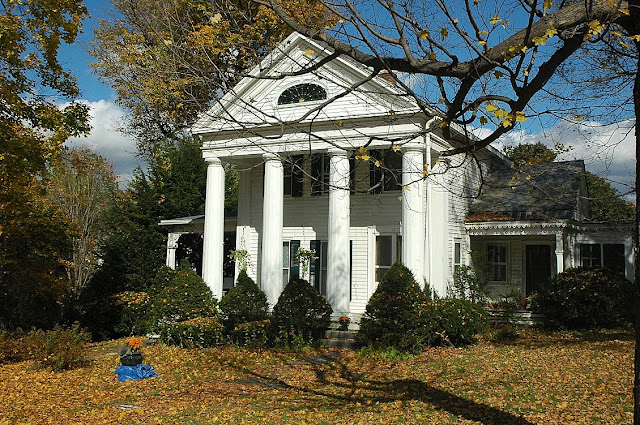Actually, it must be difficult to be a Vermont-based horror author. With the state’s verdant scenery, lack of billboards, and quaint little towns, it’s a pretty place. Of course, every object of beauty casts a shadow, and there must have been something in those Vermont shadows that inspired Shirley Jackson to conjure such classic nightmares.
Born and raised in California and educated in New York, Jackson moved to North Bennington, Vermont, with her husband in 1940. She was in her early twenties when they moved, and they lived in that town for the rest of their lives, he teaching at Bennington College and she keeping house, raising four children, and writing her way into the horror hall of fame.
Two of her tales in particular helped secure that fame. One is her novel The Haunting of Hill House. Published in 1959, it’s the story of a haunted house and—because far more than houses can be haunted, and by far more than ghosts—a haunted young woman named Eleanor, and the tragedy that occurs when those two hauntings collide. My black cat is named Eleanor in her honor.
The story is one of the best haunted house tales ever published in a genre absolutely suburban with them. The story was so powerful that a 1963 Robert Wise movie adaptation of it has gone on to become one of the best haunted house movies out there to this day.
It’s called Jennings Hall and, even if it’s not the inspiration, it’s still an eerie enough place that it should inspire some horror author at some point.
Jennings Hall is an old, imposing, gray-stoned mansion covered in creepers and secluded from the rest of the campus in an idyllic/terrifying location on a hill. Its appearance and setting certainly seem to fit the description from the opening sentences of the book, “Hill House, not sane, stood by itself against its hills, holding darkness within; it had stood so for eighty years and might stand for eighty more.”
When it’s not inspiring horror stories, Jennings Hall is used by the music department, meaning music wafts out of there…in the night…in the dark. Basically, the place comes with its own horror soundtrack.
In the end, Jennings Hall definitely looks like whatever walks there, walks alone.
She based the village on her own town of North Bennington, supposedly on its Lincoln Square, a small bit of trapezoidal area formed by Sage, Prospect, Nash, and Main streets. Jackson and her family lived for a time just a few houses down at 12 Prospect Street, an august little columned white house, and it was there that she wrote The Lottery after an errand to the square.
I mean, it’s Vermont. With its wide swathes of wilderness, lack of familiar markers, and insular, sparsely populated towns, the Green State is a terrifying place.




